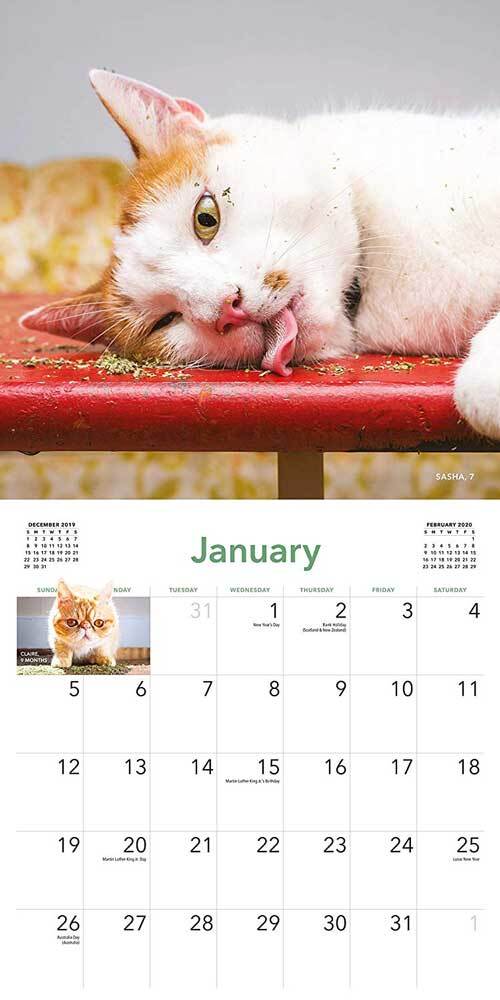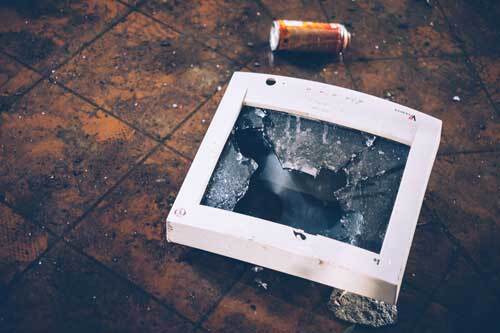Today in Tedium: So here we are, on the brink of 2020, which means I’ve been burning my fingers when making jalapeño poppers for five years now. We’re not just at the end of the year—but the end of the decade. As our anniversary is January 1, 2015, Tedium is half a decade old now, which means that, just in time for the ball drop, it’s time for another look back and forward at the end of a long year. After taking a lot in over the years, it’s time for a big exhale before we start again. I have some thoughts about preservation and digital decay that you’ll definitely want to check out. Read on. — Ernie @ Tedium
Today’s issue is sponsored by Lemonade. More from them in a second.
“It’s not any more particularly interesting, in my opinion, than 2019 or 2021. There’s a continuum of technological development, and that’s just an easy date for an editor or a writer to get a handle on.”
— Mike Liebhold, a distinguished fellow at the Institute for the Future, talking to Popular Science in 2011 about a list of predictions the magazine had gathered up that might take effect in 2020. The items in the article reflected a wide array of weird futuristic things (flying cars!) and things that ended up actually becoming reality (OLED screens in every phone!).
People willingly go to this Airbnb in Finland.
Five signs 2020 will be better than 2019
- Doing your income taxes is likely to get a lot cheaper. After a year of solid reporting by ProPublica about the sketchy ways that Intuit took advantage of an agreement with the Internal Revenue Service that was intended to make filing taxes cheaper for the public, the IRS changed its rules and will require tax companies to promote their free-filing services.
- The loosening of marijuana laws is positively impacting people’s lives. This week, Illinois Gov. JB Pritzker announced that, on top of the state’s legalization of pot in 2020, he would pardon more than 11,000 people that have been convicted of low-level drug crimes in the state. Additionally, there is growing evidence that access to medical marijuana is helping cut down on opioid prescriptions.
- Your travel options are expanding. If you’re looking for somewhere interesting to go to in early 2020, there are lots of weird places to check out, including this mushroom-dome retreat in Northern California, this snow igloo in Finland, and this train caboose in New England. Coming soon to that list is a Lord of the Rings-themed cabin in North Carolina, which opens next year.
- There is a lot of great music being made right now, across genre and style. The strangeness of the world around us seems to be giving power to the music being made for these times. And some of it has the power to knock you over. A couple of recommendations if you need something to listen to right now: “Not” by Big Thief and “Jogging” by Richard Dawson.
- The public domain, once locked off thanks to a controversial law passed with a big push from Disney, managed to survive another year without getting closed off again, which means that there’s a whole bunch of books, movies, and music in the U.S. that will be freely accessible to all starting Wednesday.

OK, we were wrong. Wall calendars are awesome now
In the very first issue of Tedium, we talked about how horrible wall calendars are, how they’ve been consistently useless and bad for a long time.
I’m assuming the wall calendar industry had a moment of reckoning upon that initial take from half a decade ago. Because the quality of wall calendars has improved immensely from that first issue, to the point where I could recommend wall calendars again as an option for keeping dates in a non-digital format.
Here are just a few worthy calendaring options worth your time:
Cats on Catnip. Becoming well known as a photographer of cats is not always something that can happen in the modern day, but Andrew Marttila has gained such a reputation, shooting cat photos that seem destined to turn the internet into a place of unadulterated joy. To that effect, Marttila’s Cats on Catnip calendar is a great example of something that comes down to execution. He’s good at cat photos, and it shows in this work of calendaring art.
Nuns Having Fun. Like Marttila’s cat photos, authors Maureen Kelly and Jeffrey Stone are experts at something incredibly niche—in their case, finding the humor in the Catholic faith. In recent years, the duo have teamed up on the Nuns Having Fun series of calendars, which feature nuns taking part in recreational activities. The colorization approach to the images gives them a distinctive look.
Goats in Trees. You may not have been aware of this, but in some parts of the world, particularly Morocco, goats are attracted to the vegetation on trees, with the Argania tree on the shores of the African country a particular attraction point. (Rather than trying to force the goats to move, farmers actually condone the practice. Though, just a warning, there is evidence that the goats are being put up there on purpose to draw in tourists.) You may never make it to Morocco yourself, but you might just find this calendar weird enough that you can’t stop staring. Hang in there.
Toilet Paper Puppies. In case you needed any proof that toilet paper is catnip for dogs, this calendar will go a long way towards making that case.
Get renters insurance starting at $5/month
Protect your laptop, phone, and other stuff wherever you go
Sign up and make claims in seconds
Insurance written in plain English
Don’t end up making claims? Awesome! That money will go to a charity of your choice

The state of our Tedium in 2020 is defined by our digital decay, and how much we actually care about that
As you might have noticed this past year, I put a lot of thought into the decay of our digital culture.
This got me in a weird discussion on Twitter that I haven’t been able to stop thinking about ever since it happened.
Back in September, I wrote a piece that spoke about the fact that we have an ongoing divide happening between digital innovation and planned obsolescence. The problem, to put it simply, is that there is no motivation among innovation-minded technology companies to actually keep their products functional after a certain age, and that this was naturally creating problems for preservation.
To put it another way: A Commodore 64 put in a closet for 30 years, barring any impact from the elements, is still going to more or less work as it did back in 1989. But a machine whose main functionality was built around the internet—say, a network computer, digital appliance, or a Windows or Mac machine that’s more than a decade old—likely will not, due to evolving security standards and a decommissioning of contemporary services.
A couple days after I wrote that piece, I posted one of my takeaways from the piece as a tweet thread. I argued that there probably is an audience for a tool that would at the very least allow these vintage machines to get online again easily, while not bothering what’s already there—a “retro proxy,” if you will.
In the midst of all this, I cited a post from Troy Hunt, a noted security expert who, among his many contributions to the modern internet, has led a push to get sites on HTTPS. Once used only for financial transactions or sensitive information, HTTPS is now used pretty much everywhere, even on low-end blogs with no interactive elements. Most old computers don’t support modern security protocols, which means that when they try to load a website, nothing happens. To put it another way, Hunt’s work in pushing site owners to get on HTTPS, while important and noble, is making preservation of vintage devices a lot harder.
Hunt eventually chimed in … and effectively told me I was wasting my time. I tried to make my case about cultural value. He said that since there was no business case there, nothing would happen. And that even trying to do this would harm security for others.
I don’t think it was a (heh) malicious view or anything—at the end of the debate, I made the case that he should reconsider his position, but left it at that. He claimed it wasn’t a position, but sheer reality.
I’m not the first to run into this headbutt of a debate on Twitter. A couple of vintage-minded tech folks with well-earned reputations refused to move their sites to HTTPS, and got a lot of blowback about it. I personally wasn’t even hardline about my take—just looking for some sort of wiggle room for these massive piles of e-waste we’re letting build up everywhere, that still have value for collectors, historians, and researchers—and would have more value with basic internet access. I still got replies that implied I was crazy.
Well, maybe I am. But not enough people are making this case, so I’m going to continue to do so.

The Apple website, as shown on a Mac Mini G4 that I acquired this year. It took some work to get it to load.
In this world of tech, few corporations have shown responsibility for digital heritage, despite the fact that they control much of what got us here. Why should Apple care about a 15-year-old Mac Mini? They haven’t supported it in a decade. Who needs drivers for that old motherboard? They’re not paying us. And who cares about Yahoo! Groups? We moved on to Facebook years ago.
Most recently, there’s been a push from companies that sell cloud-enabled hardware—Roku and Sonos, in particular—to discourage use of their old products. In Roku’s case, they sell their new devices so cheaply that it feels like a fair exchange; in Sonos’, they’ve taken to encouraging people to brick their own devices in exchange for a discount on a new one.
Eventually, the technologies we use today, which are inherently tied to the cloud, are going to become even more useless with age than the technology from the late ’90s and early 2000s that is just now heading into retro territory. Ask someone who bought a Pebble or an Ouya—both Kickstarter-era devices initially released in 2013!—about the hoops they’ve had to go through to keep their devices functional just six short years later.
Companies that make millions or billions of dollars a year aren’t taking responsibility for what they created in a realistic way. And they’re just creating more stuff. The next generation will look even worse.
This year, MySpace revealed that it lost nearly all of our data during its key period of relevance, and didn’t tell anyone until years later. That is incredibly screwed up, and we just let it happen. Barring regulations aimed at protecting consumers, it will happen again.
But I’m a realist. I know we’re not going to save every bit and byte—nor should we. But we need strategies to tackle issues of e-waste and to improve archival practices where possible. To ensure upgrades related to functionality are desired, but not compelled. And to ensure that we’re not screwing up the understanding of the artifacts we create for future generations.
The last part is where we’re particularly falling down on the job. We create stuff for the sake of the internet in the present but put no emphasis on what that product is going to look like five years from now—who’s going to maintain it, what can be done to keep it functioning, and how to dispose of it responsibly if so needed.
We are in a position where we can literally write everything down and save it for future cultures, at lower cost barriers than ever. Why aren’t we doing more of that?
Recently, I read a great blog post (yeah, a blog post, remember those?) from a designer for Automattic named Desiree Zamora Garcia. She warned against putting past styles of digital creation on a pedestal, as it limited the options for future creators. The key line:
In glorifying our past, we delight in still being able to do it the hard way. We’re still making it about us. We can’t fully set our users up for success this way. Moreover, we are perpetuating the very walls that keep people from discovering the joy of the web the same way we were so fortunate to experience.
Given what I wrote above, you might think that I disagree with that stance. But in a lot of ways, I think she’s right. We can’t let the past force the shape of the future—and determine how people are going to engage in our digital culture moving forward. And likewise, I don’t think we should stop making our sites more secure just because it ruins the experience at the edges.
But my concern is that we’re raising the ideals and the aesthetic of the recent past, but not the objects—the things that actually tell the stories of the digital era. History deserves a place beyond the rear-view mirror, because of what it reflects, how it challenges us, and how it makes us think differently about the challenges of the modern day.
We shouldn’t let the past define the future, but we can still use the tools of the future to talk about the past. And I think that as Tedium turns five years old as you get this, that’s a pretty great place to land.
Happy new year. Happy new decade. And may the ball drop lead to another decade of weird ideas in this weird newsletter thing.
--
Thanks for following me so far on this five-year journey—which, of course, continues Thursday. Find this one an interesting read? Share it with a pal! And thanks to Lemonade for sponsoring.











